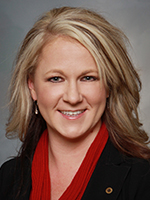We integrate hedge-fund strategies such as fixed-income arbitrage, statistical arbitrage and volatility arbitrage into the portfolio. This allocation has provided consistent mid-to-high-single-digit returns with very low volatility and limited drawdowns, regardless of market environment. Though these strategies do not distribute income, their risk/return profile enables us to allocate them towards the client’s fixed-income sleeve of the portfolio. The challenge here is that access to top managers with this focus is capacity constrained and very limited.
Business development companies (BDCs) are regulated investment companies, similar to real estate investment trusts, that must distribute 90% of their taxable income to shareholders. They provide a high dividend yield and have a simple business model. Of course, not all BDCs are created equal, and holdings and risk levels can differ materially. We use BDCs whose primary asset holdings are U.S.-based middle-market corporate loans. Publicly traded BDCs help us increase returns and income, shorten the “J” curve as we buy into existing loans, and increase liquidity. BDCs could also benefit from rising rates as the majority of the underlying assets are floating-rate loans.

Rebecca Boyd, Senior Vice President and Community Wealth Advisor
Frost Investment Services
San Antonio, Texas
$1.2 billion in assets under management
Investing and planning for retirement income is a unique process for each client because everyone has different income needs, risk tolerance, tax situations, legacy goals and time frames. Many advisors, including myself, have spent the majority of our careers helping clients accumulate wealth and prepare for the day when their investments need to provide an income.
The majority of clients get scared as we begin the income planning phase of their financial lives. For many, having their paychecks stop and their investments now supplement that loss of guaranteed income seems like a daunting task. My goal through the financial planning process is to ease some of these fears by coming up with a strategic, personalized income plan that will fit the client’s long-term income needs.
The first part of the financial planning process is understanding the client’s living expenses today and in the future. It’s important to work closely with the client to determine their monthly living expenses, while also helping the client remember those expenses that are often overlooked such as travel, gifts to friends and family, charitable donations, hobbies and health-care expenses. During this process, I remind my clients of the importance of being honest and detailed about their expenses.
I recently did a retirement income plan for my relatives, where I recommended a focus on mutual funds offered through Frost’s self-directed brokerage accounts or advisory services. As I was going over their household expense worksheet, I noticed one family member put expenses of $0 under the hobby category. Knowing that he plays golf three to four times a week, I asked him why he excluded the golf costs. He replied, “I wanted the numbers to look good.” If there is a large gap between the client’s current income and what they are spending according to their retirement plan, I find it very important and eye-opening to have a conversation to identify where that money is going today. Spending more in retirement than allotted can cause the retirement income plan to fail.
The second part of retirement income planning is determining the client’s other sources of income in retirement besides their accumulated wealth. That can include Social Security, pensions and annuity payments.








